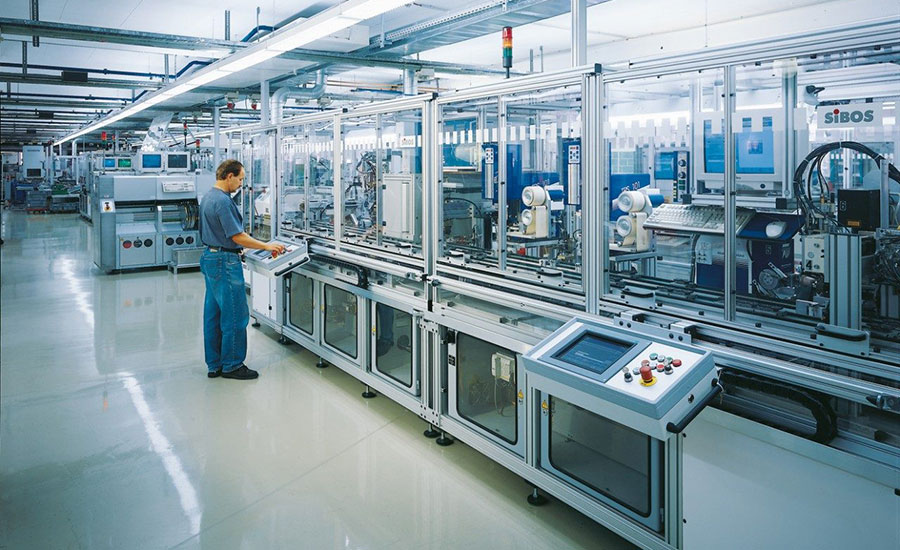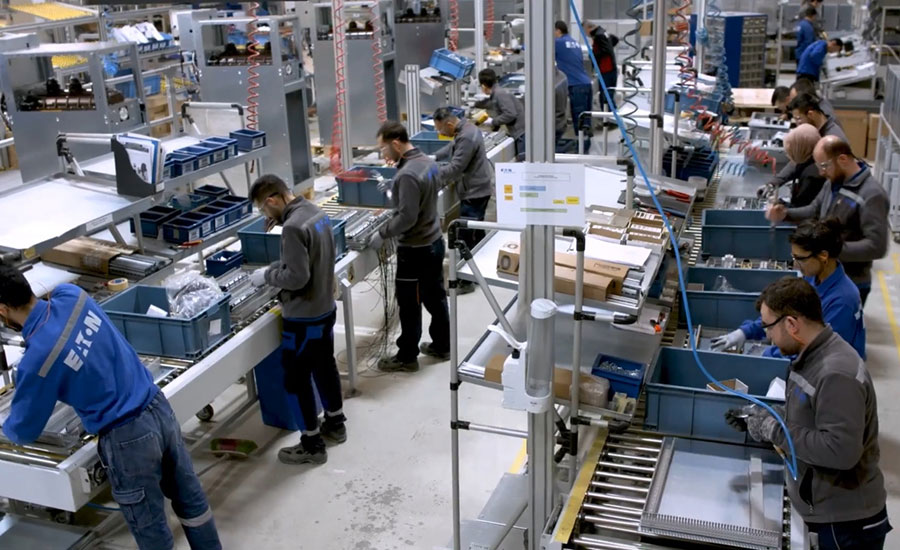Generative AI Slashes Design Time

Thanks to AI, Eaton has been able to cut product development times by as much as 87 percent.
Photo courtesy aPriori Technologies
Eaton Corp. is a $23.2 billion manufacturer of power management products for a variety of markets, including aerospace, buildings, data centers, automotive and utilities. Headquartered in Dublin, Ireland, Eaton’s 92,000 employees span 175 countries.
Eaton’s products and services help companies effectively manage electrical, hydraulic and mechanical power more reliably, efficiently, safely and sustainably. To accelerate its growth, Eaton is focusing on products for electrification, energy transition and digital transformation. It is also taking steps to become carbon neutral by 2030.

Eaton’s products and services help companies effectively manage electrical, hydraulic and mechanical power more reliably, efficiently, safely and sustainably. Photo courtesy Eaton Corp.
Long Product Development Times
Eaton’s customers regularly require customized components for their new product development initiatives. Recent requests included creating a unique valve stem for car tires and developing a new lighting fixture.
Traditionally, it takes Eaton months to complete a product design that is cost-effective and meets manufacturing specifications. Cross-functional engineering requirements are a big factor in lengthy lead times. For example, a lighting fixture design can require input from thermal, electrical, mechanical, optical and manufacturing engineering.
Product complexity, margin pressures and sustainability mandates provide additional challenges to accelerate new product development and associated supply chain operations. This process also restricts customers’ ability to shorten their product launch schedule, resulting in delays to market and a negative impact on cash flow.

Eaton’s generative AI capability is built on a robust set of historical product design data and insights from simulation software. Photo courtesy Eaton Corp.
Generative AI Accelerates Design
Eaton is using generative AI to accelerate new product development without compromising quality. The manufacturer’s generative AI capability is built on a robust set of historical product design data and insights from the company’s simulation software portfolio, including aPriori software for cost modeling, design for manufacturing (DFM), and sourcing.
Eaton combines this information to create detailed, model-based design specifications and properties to support generative AI development. With generative AI, Eaton runs thousands of design iterations in minutes (or less) and receives the top five designs. Next, Eaton feeds those designs through a high-fidelity simulation. Then, the Eaton digital design and engineering team will analyze the proposed designs to ensure that they meet customer’s requirements.
This workflow empowers the Eaton engineering team to review AI outputs for product validation and quality control and to streamline decision-making.
“Eaton’s vision is to take our traditional design processes from months to minutes,” says Uyiosa Abusomwan, Ph.D., senior global technology manager of digital design and engineering at Eaton.
Eaton has been using aPriori software since 2017 to reduce costs, improve DFM, and increase supply chain resilience. The software analyzes 3D CAD designs for cost, manufacturability and sustainability issues.
It can also simulate multiple design scenarios simultaneously, enabling the Eaton design team to evaluate the implications of alternative designs, raw materials, production processes and manufacturing locations. This enables Eaton to mitigate cost drivers and potential DFM issues early in the design process and get design options that they may not have considered.
The software’s analysis engine applies preprogrammed rules and algorithms to make decisions in real time. Eaton uses aPriori to programmatically run product design simulations in the cloud. This is important because some software applications can’t run in the backend due to a lack of automation or deterministic AI capabilities.
“We rely on modeling and simulation to optimize our generative AI capabilities. With aPriori, we can model for manufacturability and cost, and we’re also looking into sustainability,” says Abusomwan.
In a short amount of time, Eaton is achieving impressive results from its high-fidelity generative AI initiative, including:
- Minimized the weight of a liquid-to-air heat exchanger by 80 percent.
- Lowered the design time for a high-speed gear by 65 percent.
- Reduced the design time for an automated lighting fixture by 87 percent.

AI can simulate multiple design scenarios simultaneously, enabling the Eaton design team to evaluate the implications of alternative designs, materials, production processes and manufacturing locations. Photo courtesy Eaton Corp.
Designing a Light Fixture
Recently, Eaton engineers designed a new lighting fixture with the help of generative AI. Using a traditional design process, it can take up to 16 weeks to design this type of product, because it requires expertise from thermal, electrical, mechanical, optical, and manufacturing engineering.
Eaton digitized the process and trained the AI algorithm using historical product data and simulated insights to create a high-fidelity model. Eaton then used information from aPriori and other sources to evaluate designs that meet cost, performance, and other requirements. Now, Eaton can process a new design request in two weeks, cutting design time by 87 percent.
Eaton plans to double the output of its new product innovation investments. This data-driven strategy aims to improve the company’s ability to achieve its zero lead-time objectives.
Five Pillars for AI
Eaton’s digital engineering team established five pillars to support various use cases for AI in its design initiatives. Those pillars are:
- Establish an authoritative source of truth. Accurate data is the foundation for generative AI success. Eaton provides product engineering teams and its generative AI systems with quality product data from multiple systems. Data covers variables such as size, weight, tolerances and cost.
- Apply model-based engineering. Provide the generative AI system with robust simulation and modeling insights to optimize quality and accuracy. This includes aPriori’s simulation for cost and manufacturability, along with product design simulation for fluidics, thermal analysis and other disciplines.
- Intelligent automated design. The AI algorithm uses available data and the defined programmatic workflows to develop product designs. This process includes using simulation data to determine which manufacturing processes and other product parameters will have the greatest impact on design options.
- Connect manufacturing ecosystems. Use digitalization (including digital twins and the digital thread) to integrate multiple systems and applications. This pillar also includes automated workflows that span 3D CAD software, aPriori simulation for cost and DFM insights, product life cycle management software, and enterprise resourcing planning systems.
- Computing infrastructure. Global scalability is essential to support the evolving needs of the company and its customers. Eaton incorporates cloud computing, edge computing and other technologies to provide a robust, secure infrastructure for its digital design and engineering team.
For more information on AI in manufacturing, read these articles:
Whirlpool Makes Product Cost Management a Priority
Toyota Unveils New Generative AI Technique for Vehicle Design
Generative Design Software Is Transforming the Design Process
Looking for a reprint of this article?
From high-res PDFs to custom plaques, order your copy today!





